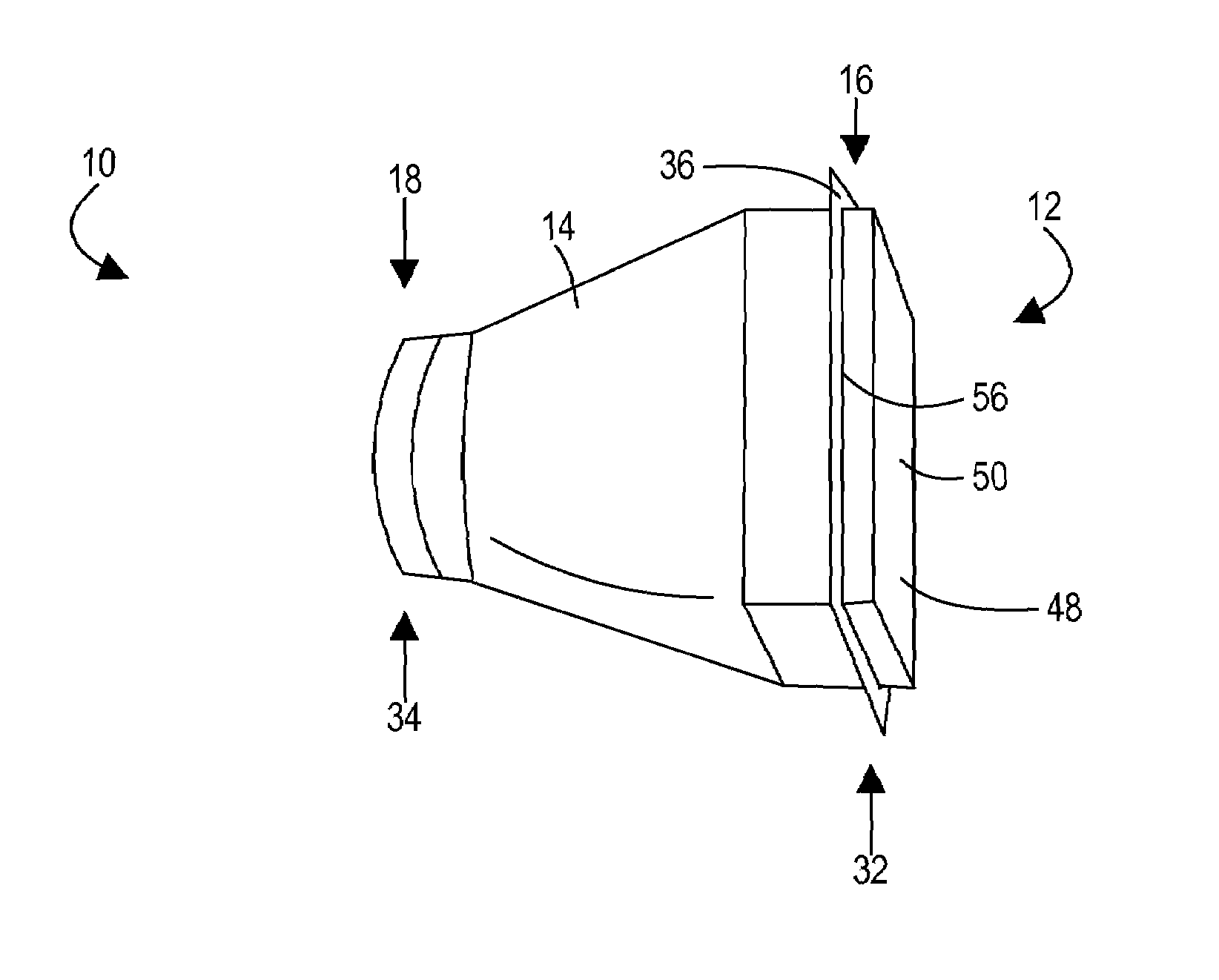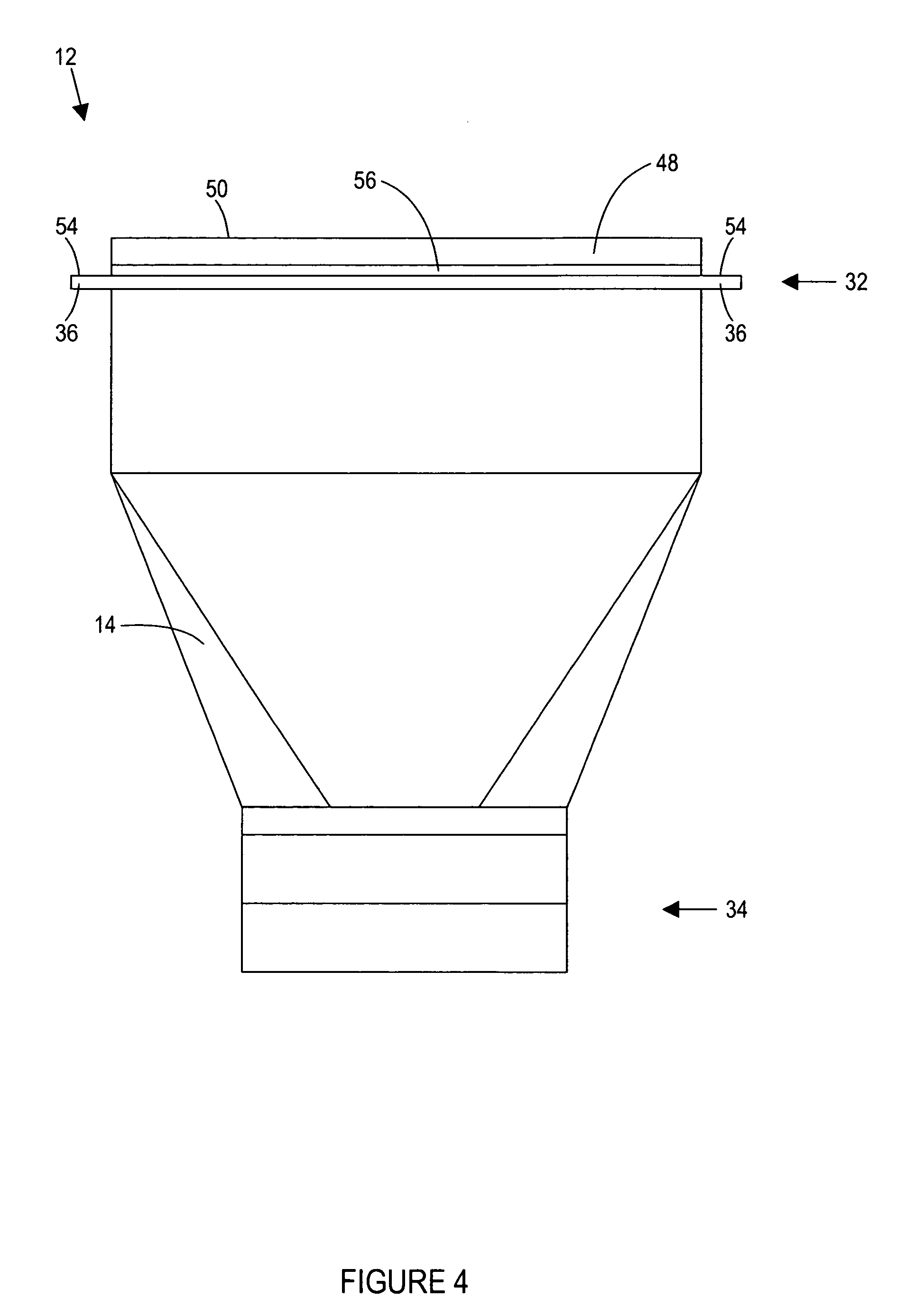Air duct cover and boot
a technology of air ducts and boot covers, which is applied in the field of air duct covers and boot covers, can solve the problems of time-consuming and laborious to properly size the opening to accommodate the duct, difficult to properly align the duct and the opening, and other problems, so as to eliminate or diminish the disadvantages and problems
- Summary
- Abstract
- Description
- Claims
- Application Information
AI Technical Summary
Benefits of technology
Problems solved by technology
Method used
Image
Examples
Embodiment Construction
[0009]A need therefore exists for a duct that eliminates or diminishes the disadvantages and problems described above.
[0010]One aspect of the invention is a duct that may form part of a ventilation system. For example, the duct may be part of an HVAC or other suitable system. The duct preferably includes a hollow interior portion that allows air to be conveyed or transported through the duct. This allows the duct, for example, to be part of a ventilation system for a home, office and other suitable types of buildings and structures. The duct may also be used with other systems for conveying gases, liquids and / or other materials. In addition, the duct may form part of a housing and / or enclosure such as for wiring, cables and the like.
[0011]Another aspect is a duct that may include one or more sections. For example, the duct may be part of a network or system that provides ventilation to a building. The duct may include a boot that is sized and configured to direct ventilation into a ...
PUM
 Login to View More
Login to View More Abstract
Description
Claims
Application Information
 Login to View More
Login to View More - R&D
- Intellectual Property
- Life Sciences
- Materials
- Tech Scout
- Unparalleled Data Quality
- Higher Quality Content
- 60% Fewer Hallucinations
Browse by: Latest US Patents, China's latest patents, Technical Efficacy Thesaurus, Application Domain, Technology Topic, Popular Technical Reports.
© 2025 PatSnap. All rights reserved.Legal|Privacy policy|Modern Slavery Act Transparency Statement|Sitemap|About US| Contact US: help@patsnap.com



